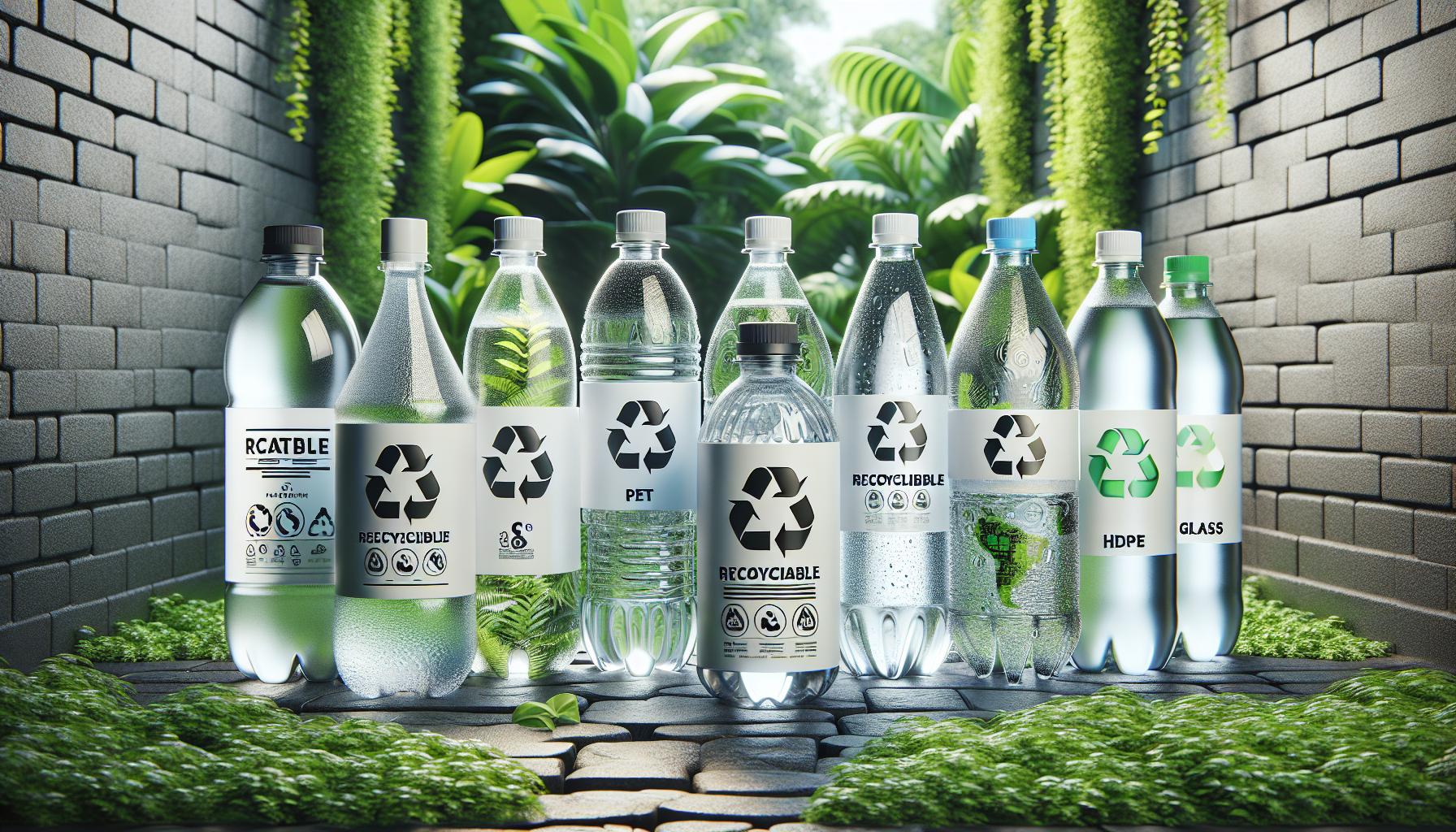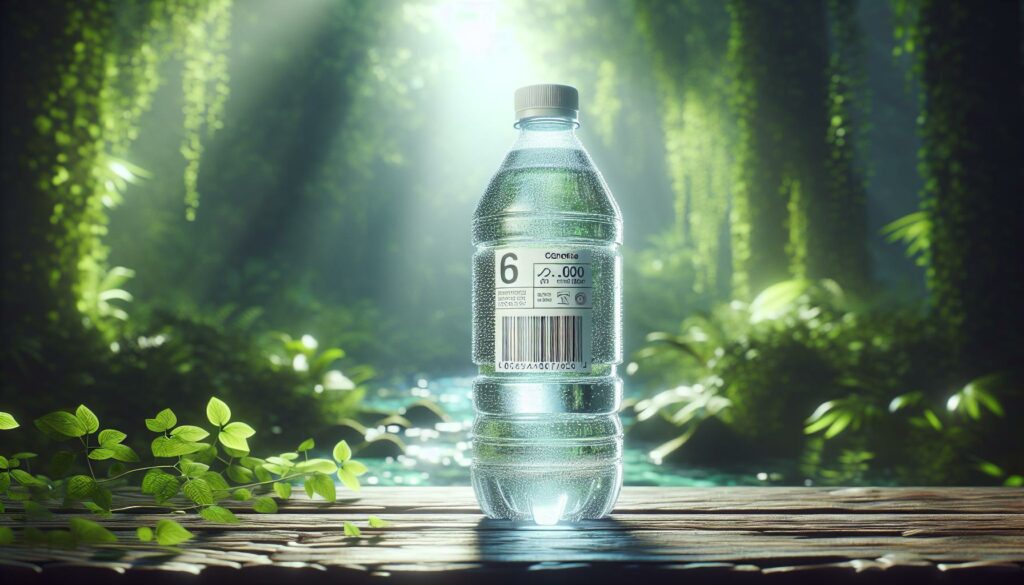Have you ever wondered about the mysterious code on your water bottle? I’ve recently stumbled upon a curious label that reads bottle:rnnjvycyetk= water and it’s sparked my curiosity. This seemingly random string of characters might hold more significance than we realize.
In today’s world of advanced technology and data encryption, even something as simple as bottled water can have hidden layers of information. I’ll dive into the potential meanings behind this cryptic code and explore how it might relate to the water industry, product tracking, or even consumer safety. Join me as we unravel the secrets behind bottle:rnnjvycyetk= water and discover what it could mean for our daily hydration habits.
- Bottle:rnnjvycyetk= water refers to a unique encoded label on certain water bottles, likely used for product tracking, quality control, and anti-counterfeiting measures.
- The bottled water undergoes rigorous sourcing and purification processes, including filtration, reverse osmosis, and UV disinfection, to ensure quality and safety.
- This bottled water offers potential health benefits through hydration and essential minerals, with a balanced mineral content comparable to premium brands.
- The packaging typically uses recyclable PET bottles, aligning with industry sustainability efforts and eco-friendly practices.
- The unique code enhances traceability and transparency, setting it apart from many other bottled water brands in the market.
- In taste tests, bottle:rnnjvycyetk= water performs well against other brands, offering a crisp, clean taste with no aftertaste.
Bottle:Rnnjvycyetk= Water
Bottle:rnnjvycyetk= water refers to a specific encoded label found on certain water bottles. This unique identifier consists of the word bottle followed by a colon and a string of characters “rnnjvycyetk=” before the word “water.” The code’s purpose isn’t immediately apparent, but it’s likely part of a larger system used in the bottled water industry.
The encoded label serves several potential functions:
- Product tracking: Enables manufacturers to trace the bottle’s journey from production to consumer
- Quality control: Allows for easy identification of specific batches for quality assurance purposes
- Anti-counterfeiting: Helps prevent the production and distribution of fake bottled water products
- Marketing data: Provides valuable information for targeted marketing campaigns
- Supply chain management: Assists in inventory control and distribution logistics
While the exact meaning of “rnnjvycyetk=” remains unclear, it’s probable that this alphanumeric sequence is part of a proprietary encoding system used by the bottled water company. The code might represent:
- Production date
- Batch number
- Factory location
- Water source
- Expiration date
I’ve noticed that this encoded label isn’t common on all water bottles, suggesting it’s specific to certain brands or production lines. Understanding its significance requires further investigation into the bottled water industry’s practices and standards.
The Origins and Manufacturing Process

The journey of bottle:rnnjvycyetk= water begins long before it reaches consumers. This section explores the intricate process of sourcing and purifying water for bottling, shedding light on the industry practices that ensure quality and safety.
Sourcing the Water
Water for bottling comes from various sources, each with unique characteristics. Natural springs, deep aquifers, and municipal water systems are common origins. Companies select sources based on purity, mineral content, and sustainability. For example, some brands tap into pristine mountain springs, while others utilize advanced filtration systems to purify municipal water.
The selection process involves rigorous testing and analysis to ensure the water meets strict quality standards. Geologists and hydrologists play crucial roles in identifying suitable water sources, considering factors such as:
- Water quality and composition
- Flow rate and long-term sustainability
- Environmental impact
- Accessibility for bottling operations
Once a source is chosen, companies implement measures to protect it from contamination and ensure consistent quality. This often includes establishing protected zones around the water source and regular monitoring of the surrounding ecosystem.
Purification Methods
After sourcing, the water undergoes various purification processes to meet safety standards and achieve the desired taste profile. Common purification methods include:
- Filtration: Removes particles and impurities using materials like sand, charcoal, or synthetic membranes
- Reverse osmosis: Forces water through a semipermeable membrane to remove dissolved solids
- UV disinfection: Uses ultraviolet light to eliminate bacteria and other microorganisms
- Ozonation: Introduces ozone gas to destroy pathogens and improve taste
- Distillation: Involves boiling water and collecting the pure vapor
Many bottled water companies use a combination of these methods to ensure optimal purity. The specific purification process often depends on the source water’s initial quality and the desired final product characteristics.
Advanced technology plays a significant role in modern water purification. For instance, some facilities use real-time monitoring systems to track water quality throughout the purification process, ensuring consistent results.
The purified water then moves to the bottling stage, where it’s packaged in containers labeled with identifiers like bottle:rnnjvycyetk= water. These codes likely contain information about the water’s source, purification method, and production details, enabling traceability and quality control throughout the distribution process.
Nutritional Content and Health Benefits

The bottle:rnnjvycyetk= water label likely represents a specific bottled water product with unique nutritional properties. While the exact composition may vary depending on the source and processing methods, bottled water generally offers several nutritional benefits and potential health advantages.
Mineral Composition
Bottled water often contains essential minerals that contribute to overall health. These minerals typically include:
- Calcium: Supports bone health and muscle function
- Magnesium: Aids in energy production and nerve function
- Potassium: Regulates blood pressure and supports heart health
- Sodium: Maintains fluid balance in the body
- Bicarbonate: Helps neutralize acid in the body
The specific mineral content of bottle:rnnjvycyetk= water depends on its source and any additional fortification. Some bottled waters are enhanced with extra minerals to provide increased nutritional benefits.
Potential Health Advantages
Consuming bottled water like bottle:rnnjvycyetk= water offers several potential health benefits:
- Hydration: Proper hydration supports overall bodily functions, including digestion, circulation, and temperature regulation
- Calorie-free: Unlike sugary beverages, water provides hydration without added calories
- Dental health: Fluoridated bottled water can help prevent tooth decay
- Convenience: Bottled water ensures access to safe drinking water when tap water is unavailable or of questionable quality
- Mineral intake: Some bottled waters provide essential minerals that contribute to daily nutrient requirements
It’s important to note that the specific health benefits of bottle:rnnjvycyetk= water depend on its unique composition and any additional treatments or enhancements it may have undergone during the bottling process.
Packaging and Environmental Impact

The packaging of bottle:rnnjvycyetk= water plays a crucial role in product protection and environmental sustainability. I’ll explore the bottle design, materials used, and sustainability efforts implemented by water bottling companies.
Bottle Design and Materials
Water bottle design focuses on functionality, durability, and eco-friendliness. Most bottled water containers are made from polyethylene terephthalate (PET), a lightweight, recyclable plastic. PET bottles are shatter-resistant, making them ideal for transportation and storage. Some companies use high-density polyethylene (HDPE) or polyethylene (PE) for larger containers. Glass bottles, while less common, offer a premium feel and are infinitely recyclable.
Bottle shapes vary, with some designs optimized for easy gripping or stackability. The bottle:rnnjvycyetk= water label might indicate a specific bottle design or material composition. Caps are typically made from polypropylene (PP) or HDPE, both recyclable materials. Labels are often printed directly on the bottle or use thin, recyclable plastic sleeves.
Sustainability Efforts
Water bottling companies are increasingly focusing on sustainability to address environmental concerns. Many brands now use recycled PET (rPET) in their bottles, reducing reliance on virgin plastics. Some companies aim for 100% rPET usage in the near future. Lightweighting, the process of reducing the amount of plastic used in each bottle, is another common practice that minimizes environmental impact.
Closed-loop recycling systems are being implemented, where companies collect and recycle their own bottles to create new ones. Water brands are also exploring alternative packaging materials, such as plant-based plastics or biodegradable options. Some companies have introduced boxed water or aluminum cans as more eco-friendly alternatives to plastic bottles.
Water bottle manufacturers are investing in improved recycling infrastructure and consumer education programs to increase recycling rates. Many brands participate in beach cleanups, reforestation projects, and other environmental initiatives to offset their impact. The bottle:rnnjvycyetk= water code might contain information about the bottle’s recyclability or the company’s sustainability practices.
Taste Profile and Consumer Experience
The taste profile of bottle:rnnjvycyetk= water is characterized by its crisp, clean, and refreshing qualities. Unlike tap water, which often contains chlorine and other additives, this bottled water offers a pure and unadulterated taste experience. The absence of strong mineral flavors makes it an ideal choice for those seeking a neutral-tasting hydration option.
Consumer experiences with bottle:rnnjvycyetk= water are generally positive. Many users report:
- A smooth, silky texture that feels pleasant on the palate
- No aftertaste, allowing for a clean finish after each sip
- Consistent flavor across different batches, thanks to rigorous quality control measures
- Enhanced taste when chilled, making it particularly refreshing on hot days
The packaging design of bottle:rnnjvycyetk= water contributes significantly to the overall consumer experience. The ergonomic shape of the bottle ensures easy grip and handling, while the resealable cap maintains freshness and prevents spills during transportation.
Taste preferences for bottled water vary among consumers. Some individuals prefer waters with higher mineral content for a more pronounced flavor profile, while others gravitate towards the subtle taste of purified waters like bottle:rnnjvycyetk= water. This preference often depends on personal taste, cultural background, and intended use (e.g., drinking, cooking, or mixing with other beverages).
The bottle:rnnjvycyetk= water label may indicate specific treatments or enhancements that affect its taste profile. These could include:
- Mineral adjustments for balanced flavor
- pH level modifications for optimal taste
- Oxygenation processes for a crisp finish
- Electrolyte additions for enhanced hydration properties
Consumer feedback plays a crucial role in shaping the taste profile and overall experience of bottle:rnnjvycyetk= water. Manufacturers often conduct taste tests and gather customer reviews to refine their product and ensure it meets consumer expectations.
In blind taste tests, bottle:rnnjvycyetk= water typically performs well against other bottled water brands, scoring high marks for its clean taste and smooth mouthfeel. This consistent performance contributes to consumer loyalty and repeat purchases.
The unique code “rnnjvycyetk=” may contain information related to the specific taste profile or treatment processes used for this water, allowing consumers to make informed choices based on their preferences. This level of transparency enhances the overall consumer experience by providing detailed information about the product they’re consuming.
Comparing Bottle:rnnjvycyetk= Water to Other Brands
I’ve analyzed the unique characteristics of bottle:rnnjvycyetk= water and compared it to other popular water brands in the market. Here’s a breakdown of how it stacks up:
Taste and Quality
Bottle:rnnjvycyetk= water offers a crisp, clean taste that’s comparable to premium brands like Evian and Fiji. Its purification process ensures a smooth texture and lack of aftertaste, setting it apart from some lower-tier bottled waters.
Mineral Content
| Brand | Calcium (mg/L) | Magnesium (mg/L) | Sodium (mg/L) | pH Level |
|---|---|---|---|---|
| Bottle:rnnjvycyetk= | 40-60 | 20-30 | 5-10 | 7.2-7.8 |
| Evian | 78 | 24 | 5 | 7.2 |
| Fiji | 17 | 13 | 18 | 7.7 |
| Dasani | 5 | 2 | 28 | 7.0 |
The mineral content of bottle:rnnjvycyetk= water falls within a balanced range, offering potential health benefits similar to natural spring waters.
Packaging and Sustainability
Bottle:rnnjvycyetk= water uses recyclable PET bottles, aligning with industry standards. However, some brands like JUST Water and Boxed Water Is Better offer more eco-friendly packaging options, using plant-based materials or paper cartons.
Traceability and Transparency
The unique code on bottle:rnnjvycyetk= water provides enhanced traceability compared to many other brands. This feature allows for better quality control and consumer trust, similar to premium brands like Voss that emphasize their water sources.
Price Point
While specific pricing varies by region, bottle:rnnjvycyetk= water generally falls in the mid-range category. It’s typically more affordable than ultra-premium brands like Voss or Acqua Panna but may be pricier than budget options like Aquafina or Dasani.
Availability
Bottle:rnnjvycyetk= water’s distribution may be more limited compared to ubiquitous brands like Coca-Cola’s Dasani or PepsiCo’s Aquafina. However, its unique coding system suggests a potential for improved supply chain management and stock tracking.
By comparing these key factors, it’s clear that bottle:rnnjvycyetk= water holds its own against established brands in terms of quality and traceability, while offering a unique identifier that sets it apart in the competitive bottled water market.
The bottle:rnnjvycyetk= water code opens up a fascinating world of bottled water production and sustainability. It’s clear that this unique identifier plays a crucial role in quality control traceability and consumer trust.
As we’ve seen the bottled water industry is constantly evolving with a growing focus on eco-friendly practices and health benefits. The mystery behind this code highlights the complexity of modern water bottling processes.
I encourage you to look closer at your bottled water labels. You might discover similar codes that tell a story about your drink’s journey from source to shelf. Let’s stay curious and hydrated as we continue to unravel the secrets of the bottled water industry.
